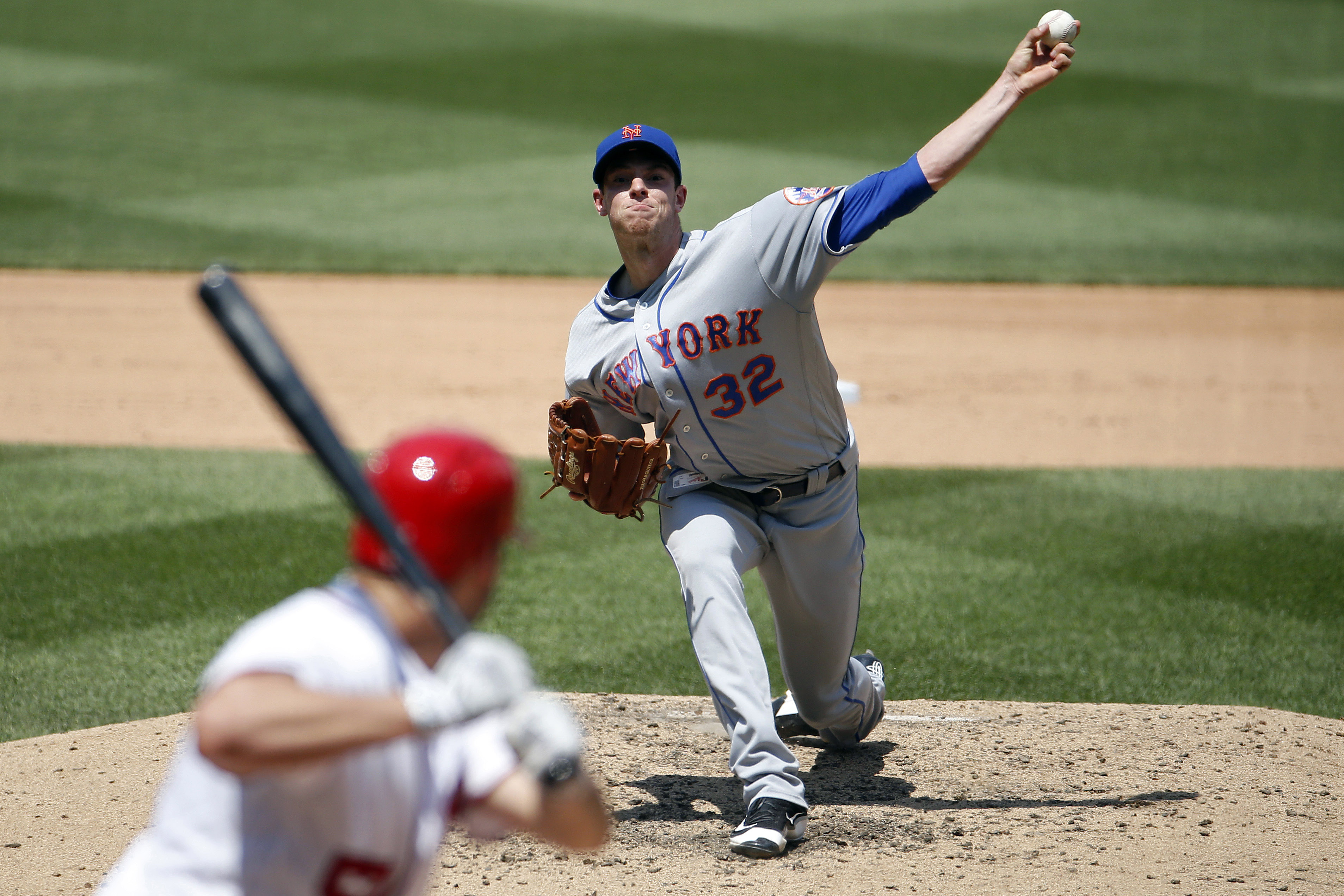The 2016 Mets have heretofore labored through an imperfect season. They’ve mashed the most taters in MLB, yet the offense is still generally terrible. Dan Warthen’s staff has been the third-best in the bigs–behind the Cubs and Washington–but Matt Harvey and (to a much lesser extent) Jacob deGrom are not pitching near the level we saw during last year’s drive to the World Series. This season has gone left then right, sideways and crossways, more good than bad but never stable in any sense of the word.
But Steven Matz has been a calming force amid any concerns. Matz’s four-seamer (94.5 mph) is the second-fastest among left-handed starters, behind only Arizona’s Robbie Ray and ahead of Chris Sale and David Price. He and Clayton Kershaw have basically the same ground ball-to-flyball ratio, and his swing rate is higher than Madison Bumgarner’s. Listed at 6-foot-2 and 200 pounds, Matz doesn’t give off that Norse god whiff of overpowerment Noah Syndergaard does but he delivers the goods all the same. He’s more Stephen Curry than Kareem Abdul-Jabbar. He’s as relatable as late-career Pedro Martinez: Hey, maybe I could do that! (Comparing anyone to early- or mid-career Pedro is downright sacrilege and I shan’t stand for it.)
So while it’s easy to stress over where the Mets would be without Syndergaard’s contributions and what President Trump would be legislating in that particularly horrific Alternate 1985, we’re probably undervaluing what Matz has meant through not only the first two months but through his entire (yet still brief) tenure in Queens. We’re still a month shy of the one-year anniversary of his MLB debut, and he’s made 14 regular-season starts over that time. Here’s the breakdown between last season and 2015:
2015: 6 GS, 8.6 K/9, .258 TAv, 4.14 DRA, 166 ERA+, .300 BABIP
2016: 8 GS, 9.1 K/9, .208 TAv, 3.27 DRA, 164 ERA+, .285 BABIP
Including three starts in the playoffs last year, Matz is right at 100 big-league innings for his career, and his numbers are excellent thus far. Most critically, nothing here is really unstainable. His peripherals are above-average. He keeps runners off base, evinced by his 1.09 career WHIP. His 2.58 FIP this season will most likely level off over time, but the BABIP is a comfortable and even one that can be further improved upon. The TAv is outstanding and maybe ripe for some regression over time, but Matz induces enough swings that he should only get better at leveraging his stuff to force even higher strikeout rates.
Matz just turned 25 this past weekend, so he’s more mature and developed than your typical second-year starter, very much like deGrom, who was dominant last year in his age-27 season coming off a Rookie of the Year campaign. To the extent that he’s still building up his big-league arm, Matz has a confident way about him. He knows what kind of pitcher he is. His month-to-month usage and velocity has remained consistent since his call-up. (If anything, it looks like he’s been able to tack on a bit more to his slider and curve.) As Doug Thorburn noted this weekend, Matz’s performance has been no fluke, with a plus-fastball and command around the zone reminiscent of a veteran: “His mechanics … support the stat-line, as a pitcher whose delivery is a little bit light on power but whose stability is advanced beyond his years.”
As someone who still qualifies as a rookie in 2016, Matz has to be considered the favorite for National League Rookie of the Year at this point. Tonight he goes against the White Sox in his 15th career start. Pitcher wins are the worst, of course, but he’s still only been charged with a loss once over that span. Those are the kind of results the Mets need from their rotation right now: consistency above all else. They’ve had it from Syndergaard. They expect it back from deGrom and (yesterday’s gem notwithstanding) Harvey. But that they can count on it from Matz, too, will determine whether this team can make it deep into October.
Photo Credit: Geoff Burke-USA TODAY Sports
